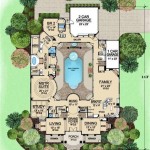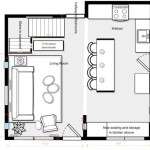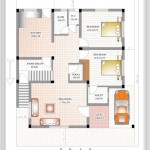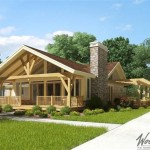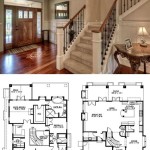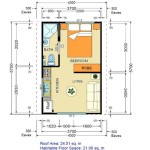```html
Rona Home Building Plans: A Comprehensive Guide
Rona, a prominent retailer of home improvement and construction products, offers a range of resources for individuals planning to build or renovate their homes. Among these resources, Rona home building plans play a significant role, providing a framework and guidance for various construction projects. Analyzing these plans necessitates understanding their scope, types, associated benefits, and limitations. This article provides a comprehensive overview of Rona home building plans, covering essential aspects for prospective homeowners and contractors.
Understanding the Scope of Rona Home Building Plans
Rona home building plans are typically pre-designed architectural blueprints that cater to diverse housing styles and sizes. These plans are structured to offer a comprehensive overview of the entire construction, from the foundation to the roofing. The specific components included within each plan are designed to provide a structured outline for the construction process. These blueprints serve as a roadmap for builders, outlining specific instructions for construction, material requirements, and spatial configurations.
The scope of these plans generally includes detailed floor plans, elevation drawings, and cross-sectional views. Floor plans illustrate the arrangement and dimensions of rooms within the house, depicting the location of walls, doors, windows, and built-in fixtures. Elevation drawings provide an external view of the house from different angles, showcasing the architectural style and detailing the exterior finishes. Cross-sectional views offer a vertical cut-through of the house, revealing the internal structure and construction methods employed for various elements such as floors, walls, and roofs.
Beyond the architectural blueprints, Rona home building plans often incorporate additional documentation, such as structural engineering details, plumbing schematics, and electrical layouts. Structural engineering details ensure the structural integrity and stability of the building, specifying the size and type of beams, columns, and load-bearing walls. Plumbing schematics outline the layout of water supply and drainage systems, indicating the location of pipes, fixtures, and connections. Electrical layouts illustrate the placement of wiring, outlets, switches, and lighting fixtures, adhering to relevant electrical codes and safety standards.
Before selecting a Rona home building plan, it is critical to ascertain precise needs and preferences. Carefully consider the size of the desired home, the number of rooms, the architectural style, and any specific features or amenities required. Analyzing the site conditions is also crucial, assessing factors such as soil type, slope, and orientation to ensure the plan is suitable for the location. Furthermore, it is essential to understand local building codes and regulations to guarantee that the selected plan complies with all applicable requirements.
Types of Rona Home Building Plans Available
Rona offers a variety of home building plans to accommodate different needs and budgets. These plans can be categorized based on several factors, including the size of the house, the architectural style, and the level of customization offered. Understanding the various types of plans is vital for selecting the one that best aligns with your specific requirements and preferences.
One common categorization is based on the size of the house, with plans available for small, medium, and large homes. Small home plans, typically ranging from 800 to 1,200 square feet, are ideal for individuals or couples seeking a compact and efficient living space. These plans often feature open floor plans and prioritize maximizing usable space. Medium-sized home plans, ranging from 1,200 to 2,000 square feet, are suitable for families with children or individuals who require additional living space. These plans commonly include multiple bedrooms, bathrooms, and living areas. Large home plans, exceeding 2,000 square feet, cater to those seeking expansive living spaces and luxurious amenities. These plans often feature multiple levels, grand entrances, and specialized rooms such as home offices, theaters, and gyms.
Another categorization is based on architectural style, with plans available for various styles such as traditional, contemporary, and modern designs. Traditional home plans often feature classic architectural elements such as gabled roofs, dormers, and covered porches. These plans evoke a sense of timelessness and are suitable for those seeking a familiar and comfortable aesthetic. Contemporary home plans typically showcase clean lines, open floor plans, and large windows. They often incorporate sustainable building materials and energy-efficient designs, appealing to those seeking modern and environmentally friendly homes. Modern home plans emphasize minimalist aesthetics, geometric shapes, and innovative materials. These plans often incorporate cutting-edge technologies and showcase a bold and unique architectural style.
Rona also offers customizable home building plans, allowing homeowners to modify the pre-designed blueprints to suit their specific needs and preferences. Customization options may include altering the floor plan, adding or removing rooms, changing the exterior finishes, and incorporating specific features such as a finished basement or a three-car garage. However, the level of customization available can vary, so it's important to clarify the extent of permitted changes before finalizing the selection. Some plans may allow for minor alterations, while others may offer complete customization options.
Navigating the Benefits and Limitations of Rona Building Plans
Utilizing Rona home building plans offers several potential advantages, primarily concerning cost savings and time efficiency. Pre-designed plans are generally more affordable than custom architectural designs, as the development costs are spread across multiple customers. This can significantly reduce the upfront expenses of the building project, especially for those on a budget. Moreover, pre-designed plans can save time by eliminating the need for developing a custom design from scratch. These plans are readily available and can be quickly reviewed and selected, accelerating the planning phase of the project.
Furthermore, Rona home building plans can provide a level of assurance regarding constructability and compliance. These plans are typically designed by experienced architects and engineers, ensuring that the proposed design is structurally sound and adheres to relevant building codes. This can reduce the risk of encountering unexpected problems during construction and minimize the need for costly revisions or modifications. However, it is essential to verify that the plans comply with local building codes and regulations, as codes may vary based on location. Modifications may be necessary to ensure compliance, which could incur additional costs.
Despite the benefits of Rona home building plans, there are certain limitations to consider. One potential limitation is the lack of complete customization. While some plans offer customization options, the extent of these options may be limited, which may not satisfy homeowners with very specific needs or preferences. In these cases, custom architectural designs may be a better option, allowing for greater flexibility and control over the design process. Custom designs, however, come at a higher cost and may require more time to develop.
Another limitation is the potential for site incompatibility. Pre-designed plans may not be perfectly suited for every building site, as factors such as soil conditions, slope, and orientation can influence the design requirements. If the selected plan is not compatible with the site, modifications may be necessary, which could add to the overall cost and complexity of the building project. It is essential to conduct a thorough site assessment and consult with a qualified builder or engineer to determine the suitability of the plan for the specific location.
The overall cost of the project should also be carefully considered. Rona provides the building plans, but the actual building costs, including materials and labor, are the responsibility of the homeowner or contractor. These costs can vary significantly depending on factors such as the size of the house, the quality of materials, and the labor rates in the area. Obtaining multiple quotes from qualified contractors is crucial to estimate the total cost of the project accurately. It is important to factor in potential cost overruns and unforeseen expenses, such as unexpected site conditions or material price increases.
Engaging with professionals throughout the process is advantageous. Consulting with a licensed architect, structural engineer, and experienced contractor is beneficial to ensure the chosen plan meets specific needs, adheres to local building codes and regulations, and is structurally sound for the chosen building site. These experts can provide guidance and support throughout the project, helping to avoid potential problems and ensure a successful outcome.
```
Rona Home Plans House Design With Photos

Two Story Modern Urban Style House Plan 1110 Rona

Two Story Modern Urban Style House Plan 1110 Rona

Landscape House Ruth Packer Rona Levin Architects Archdaily

Two Story Modern Urban Style House Plan 1110 Rona

Two Story Modern Urban Style House Plan 1110 Rona Plans Search
Build A Pergola 1 Rona
Build A Garage 1 Rona

How To Build A Backyard Shed Rona

Lowe S Offers 3 2b To Take Over Canadian Rival Rona Cbc News

